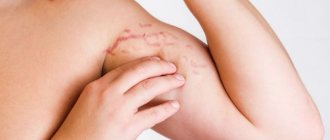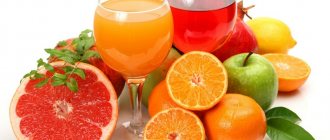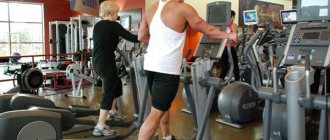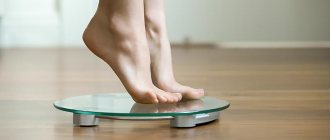A diet for weight loss will be effective if the desire to lose weight arose not impulsively, but consciously. And if there are no psychological problems at the root of excess weight gain.
What diets for quick weight loss do women and men try before turning to Dr. Saikov for help?
The most effective diets for weight loss include:
- Hollywood,
- Kefir,
- Kremlevskaya.
These are quick diets that help you lose weight by revising the food selection in your refrigerator.
Hollywood Diet
The Hollywood diet spread from representatives of show business. Western stars call it the most effective diet. It is limited in time - 14 days, or two weeks. The diet excludes fried, fatty, salt, and sugar from the diet. You can’t eat sweets or flour. Of the fruits and vegetables that are prohibited, those that contain a lot of starch are potatoes, beans and peas, grapes, bananas.
The basis of the diet during the diet is quail and chicken eggs, tomatoes, cucumbers, citrus fruits. Stay away from the refrigerator at least an hour before bedtime.
Kremlin diet
The approximate menu of the Kremlin diet is a minimum of carbohydrates in the diet. This diet is based on calculating points that are assigned to each food depending on how many carbohydrates it contains. Points are indicated per 100 grams of products.
For example, cabbage soup is 2 points, boiled lamb, beef, pork and chicken are 0 points, Grillage candies are 65, fresh cucumber is 3, green tea is 0.
For the Kremlin to become an effective diet for weight loss, you need to adhere to a certain system of accumulating points:
- up to 40 – active weight loss, a proven way to lose excess weight,
- 60 – maintaining weight at the same level,
- over 60 – weight gain.
Why diet doesn't work in the long run
There are a lot of positive reviews on diets on social networks, but few go into detail. English-language Instagram is rich in “before and after” photographs, where 150-kilogram women turn into miniature ladies. The authors of such publications write that the secret to losing weight is the keto diet or any other special diet that, by luck, you can buy from them. But they don’t say that, for example, before starting the keto diet, they underwent gastric banding - an operation that in some developed countries is performed free of charge with insurance.
“The benefits of the keto diet have been discussed for a long time at Harvard Medical School, and so far the opinion is unanimous: it can only be recommended for children with certain forms of epilepsy. It has been proven that with a low carbohydrate and high fat intake, seizures are less likely to occur. In all other cases, this diet is harmful,” says GMS Clinic nutritionist Svetlana Artemova, “A sudden refusal of carbohydrates is fraught with serious disorders. A person needs at least 120 grams per day. It’s better in the form of grains.”
A diet with a sharp restriction of proteins, fats or carbohydrates inevitably leads to breakdown. If you do not stop unhealthy attempts to lose weight, you can develop an eating disorder and obesity - this was proven by a five-year observation of girls and boys. Teenage girls still form groups, create chat rooms and support each other on their path to painful slimness.
“No diet has been shown to be effective in the long term. This is a provocateur of eating disorders, says Marina Garmash, a child psychiatrist at the Fantasy clinic. - In almost all cases, after 3 years, the weight returned to its previous figures, or even increased. All diets with strict calorie restriction, as well as mono-diets, significantly limit the usual diet in terms of calorie content, variety and nutrition. The danger is that a person is not programmed for mono-nutrition: he needs different food groups every day. Such diets can reduce weight, but at the expense of cutting carbohydrates. This leads to fluid loss and a minus on the scale. But as soon as a person returns to his previous diet, the weight instantly returns, but the dietary experience will provoke overeating, worsen contact with one’s body and the ability to recognize feelings of hunger and satiety. Addiction to diets can “exacerbate” chronic diseases. For example, from the gastrointestinal tract or genitourinary system.”
This is what happened to Anna from Novosibirsk. After a caustic remark from a classmate, she went on a diet. After going through several crash-diet cycles, she lost several kilograms, but didn’t stop there. Even when her loved ones sounded the alarm, Anna continued to lose weight until she reached a critically low weight. The result is major health problems and infertility.
Dividing food into “good” and “bad” is unscientific: the body does not care where it gets its energy from. The demonization of sugar is also based on the personal opinion of some nutritionists and fitness trainers. A study was conducted in Australia and found that sugar consumption has recently decreased, but the number of obese people is steadily increasing. This phenomenon was called the Australian paradox. Scientists have found that the main culprit in obesity is not sugar, but overeating.
“Modern scientific data do not recognize the existence of food dependence of the human body on any specific food nutrients and foods. We can talk about dependence on food in general and on the very process of eating it. A person experiences a subjective addiction to food as part of a complex process of activation of the reward system,” explains Marina Garmash. “The demonization of sugar and its restrictions ultimately lead to its excess consumption with subsequent feelings of guilt, which in turn serves as a risk for the onset of an eating disorder.” .
Physical activity is an essential component in a weight loss system.
Combining certain foods and taking into account their calorie content are important when losing weight both in overweight and obese individuals. The most effective diet in any system for combating excess weight is physical activity.
The principle of introducing physical activity: start with measured walking, a minimum of 500 steps per day, a maximum of five thousand. Walking speed no more than 4 km/hour. When you start walking actively, keep your speed to no more than 70 steps per minute. When you get used to this pace, increase to 90 steps per minute. It is believed that to lose weight you need to walk at least 110 steps per minute.
The second type of physical activity for quick weight loss is swimming. An important point - swim before eating, and do not rush to eat immediately after visiting the pool.
Diets: approved by science!
Everyone already knows that strict diets are harmful. Not long ago, doctors pronounced judgment on the once popular protein diet: it turned out that we do not gain weight from excess carbohydrates, so sticking to proteins alone is both ineffective and dangerous. Who knows, maybe in fifty years the following methods for losing weight will also find flaws. But for now they are the best and most effective of what modern weight loss offers. 1. LOW FAT DIET People started talking about it for the first time in the 80s of the last century, and its effectiveness was proven already in the 90s. At the same time, they confirmed that the fat on the sides is not much different from the fat in food, which means that once you switch to low-fat foods, the weight will begin to come off.
This diet is easier to tolerate than others. You are full of strength and energy, you eat whatever you want, whenever you want, and your weight decreases by 1.5-2 kg per month.
That is, as much as doctors recommend. True, it is assumed that everything that ends up on your table or in the refrigerator will be either low-fat or low-fat. If meat, then lean beef or pork, turkey or skinless chicken. If fish, then cod, pollock, and so on: fatty mackerel or salmon can be tasted only 1-2 times a month. If it’s sweets, then marmalade, marshmallows and marshmallows. Milk and kefir - 1%, cottage cheese - low-fat. No more than 40-50 g of fat is allowed per day. Our assessment: + easier to tolerate than other diets + no forbidden foods + you can eat whenever and as much as you want + no need to count calories + commonly available products are used + individual taste preferences are taken into account - with a strict restriction of fats (less than 15-20 g per day) this may cause deficiency of fat-soluble vitamins A, D, E, K and polyunsaturated fatty acids. 2. FRACTIONAL NUTRITION (GRAZING) The “new diet”, which was called grazing (from English to graze - “graze”) has actually been known for a long time. This is a fractional meal, useful both for excess weight and for diseases of the gastrointestinal tract. The main advantage is that grazing reduces the daily calorie intake. Scientists have found that the more often we eat, the fewer calories we need to feel full.
On average, calorie intake is reduced by 10-15%.
This is already good for maintaining weight, but grazing has a couple more advantages. If there is no overeating (and with fractional meals it almost never happens), a person maintains good tone and performance all day, and his energy expenditure naturally increases. And finally, against the background of grazing, sleep normalizes, which in itself also leads to weight loss. Our assessment: + such nutrition is useful for diseases of the gastrointestinal tract, it prevents the development of atherosclerosis, arterial hypertension, and slows down the aging process. + the weight loss effect of grazing can be significantly enhanced if the person losing weight also switches to a low-fat diet - if you are not a housewife, you will have to constantly carry food with you: you cannot skip snacks.
3. PLATE MODEL If 50-60% of your diet consists of complex carbohydrates, 25-35% of “good” (mono- and polyunsaturated) fats, and 10-20% of proteins, you can congratulate yourself: your diet is balanced. Are you not a nutritionist and can’t count the nutrients in dishes? Then use the plate model. She will tell you which foods and in what proportion should be on your table, adjust the portion size - and help you lose weight!
If you eat lunch and dinner every day for a year according to the “plate model”, it is quite possible to lose 20-25 kg.
So, we take the most ordinary vessel for second courses and mentally divide it into four parts. Half should be vegetables - fresh, boiled or steamed, grilled, with a small amount of oil or low-fat sauce (soy, lemon juice, balsamic vinegar), or no dressing at all. A quarter is a side dish (boiled cereals, potatoes, pasta), again seasoned with low-fat sauce (no more than 120-150 g in total). We occupy another quarter of the plate with protein foods (a low-fat piece of meat, fish, chicken or turkey without skin, seafood, legumes) - weighing up to 100 g. Lunch or dinner should be washed down with low-fat milk, kefir, unsweetened tea or water. You can additionally eat 1-2 slices of whole grain bread, and for dessert enjoy fruit or berries. Our assessment: + varied, balanced diet, rich in vitamins and microelements + minimum restrictions + no need to count calories + commonly available products are used + individual taste preferences are taken into account - the diet may seem too free to those who need control, strict boundaries and step-by-step instructions.
4. CLUB “LOSING WEIGHT CORRECTLY” To lose weight, you need a combination of three factors - nutrition, physical activity and psycho-emotional mood. The HP club takes all three into account. Here you will find yourself in a circle of like-minded people. You will be given nutritional recommendations (balanced according to the “plate model”, low fat, fractional). They will tell you about fat burning workouts. And most importantly, they will explain how to painlessly combine new skills with old habits.
Many experts agree that the main thing to lose weight is to solve your psychological problems.
Everything in the body is interconnected, and we try to compensate for a lack of one thing with an excess of another. Therefore, food can replace communication for us and protect us from anxiety. With low self-esteem, excess weight gives a feeling of solidity and increases self-confidence. Group classes at the “Lose Weight Correctly” club help a person cope with personal problems, increase self-esteem - and ultimately lose weight. Our assessment: + an integrated approach + lifestyle changes, which leads to lasting results + an established and absolutely safe method, with the help of which many have lost excess weight - a subscription to visiting clubs is paid - products and dishes according to the "HP" system are assessed in points, and there is a possibility of abuse - for example, using all the daily points on sweets. 5. DIETARY MODIFIERS The satiety of a product and its calorie content are in no way related to each other. The simplest example is 200 g of cooked rice and a tablespoon of vegetable oil: both contain 150 kcal, but rice is much more filling. Realizing this, manufacturers began to create products “with maximum satiety with a minimum of calories” - cocktails, side dishes and soups that promote weight loss. They do not break down fat from food and do not remove toxins. Simply, thanks to the high concentration of proteins, vitamins, minerals and trace elements, cocktails fill you up faster. And if you take them before meals (in no case should they replace main meals!), the calorie content of the daily diet will automatically decrease by 20-30%.
The rate of weight loss when taking cocktails is from 2 to 4 kg per month.
However, doctors advise paying less attention to the speed of weight loss and more to comfort and well-being. After all, the less work we spend on weight loss, the easier it will be to maintain the result. Our assessment: + an excellent snack + the calorie content of the diet decreases automatically (after a cocktail you feel less hungry) + enriches the diet of those losing weight with vitamins and microelements; you may not like the taste; to achieve greater results, additional nutritional correction will be required
6. LOW-CALORIE DIET Experiments on animals have shown that reducing calorie intake increases their life expectancy by 40%. Can a low-calorie diet make people live longer? “Yes,” said the Okinawa Japanese confidently, based on observations of his compatriots from Ryukyu Island. Their diet contains 20% fewer calories compared to other inhabitants of the Land of the Rising Sun, and they live 7-10 years longer!
The calorie content of the diet is reduced by eliminating any harmful foods such as baked goods and sweets.
But greens, vegetables, fish, poultry, egg whites and legumes are welcome in every possible way. Okinawa followers limit their fat consumption to a minimum, only occasionally allowing themselves to dress a salad with vegetable oil or eat an avocado. For adherents, a low-calorie diet is a way of life, and weight loss is not an end in itself. The body mass index of such people is below normal - but how could it be otherwise if you consume only 1200-1300 kcal every day? Our assessment: + the basis of the diet is optimizing the quality of food + can move weight off the ground at the beginning of losing weight - there is no reliable data on the effects of a low-calorie diet on life expectancy - you need to constantly control yourself; supplementing this meager diet with physical activity will most likely not be possible a deficiency of vitamins and microelements is created; it is contraindicated for people with a tendency to orthorexia and anorexia - does not change the lifestyle, gives a temporary result - there is a high probability of breakdowns and the return of kilograms 7. FRENCH DIET According to Mireille Guiliano, author of the bestseller “Why don’t French women get fat?”, her compatriots they love bread, do not refuse desserts, and do not suffer from remorse. They love vegetables and fruits, follow the rule “less is more” and despise fast food. French women trust not the scale, but the “zipper syndrome.” They walk and do not use elevators. And that is why they have an excellent figure! Mireille advises her readers to learn to treat food calmly, without fanaticism, eat little and often, move a lot and drink a lot of water.
An important thesis of the French woman: “If you don’t have time to sit down to eat, it’s better not to eat at all.”
The method includes 3 phases. The first (3 weeks) is keeping a diary: it will help you find out your weak points. The second phase (from a month to three) is a change in eating habits. During this time, you should learn to enjoy the quality of food, not its quantity. The third phase is similar to the second, but you can already introduce “harmful” foods into your diet that were previously prohibited. And then comes the stage of maintaining your ideal weight: you continue to live like a French woman until the end of your days. Our assessment: + there are no absolute prohibitions + the “game” approach to losing weight will appeal to many + can be used as a background philosophy in combination with other ways to lose weight - requires a lot of knowledge about the products
8. GLYCEMIC INDEX DIET The concept of glycemic index (GI) was introduced into use by doctors who helped diabetics. The fact is that carbohydrate foods change blood sugar levels in different ways. Some products increase it significantly, others - moderately, and others - little. This ability was called the glycemic index (GI). The GI of glucose or white bread is taken as a guide; it is equal to 100. A GI of 70 and above is considered high, from 56 to 69 is considered medium, and from 55 and below is considered low. The lower the GI, the better for those losing weight.
It is not difficult to find out glycemic indices, but the same product may have a different GI depending on processing.
For example, it is lower for crushed cereals than for puffed cereal or popcorn. In addition, do not forget that there are foods that, although the GI is low, are high in fat content. This includes chocolate and most nuts. Another “trick” that we also need to constantly remember is that the index of a product can change depending on whether we ate it separately from other food or together with it. If one dish has a higher GI than another, then the one with more will turn the tide in his favor. Therefore, in particular, those on a diet based on the glycemic index are not recommended to eat porridge and omelet for breakfast. Our rating: + can be used by both diabetics and people suffering from excess weight and carbohydrate metabolism disorders. - the number of conventions and restrictions makes your head spin - does not change your lifestyle, gives temporary results - there is a high probability of breakdowns and the return of kilograms
Author:
Konstantin PETROV, Päivi BOYAKHCHAN, Elena SHIRYAEVA Published: April 2, 2021
An effective diet begins with psychotherapy
Overeating is often a reaction to stress. When there is stress at work, the loss of a loved one, or problems in interpersonal relationships, psychogenic overeating develops. A person eats excess food to get rid of internal discomfort. The result is powerlessness over extra pounds, a gradual gain of kilograms, which leads to overweight and obesity.
To find your most effective weight loss diet, you need to stabilize your emotional state. Therefore, Dr. Saikov begins treatment for excess weight with a session of emotional stress therapy, during which he helps to shape the patient’s mood for treatment.











